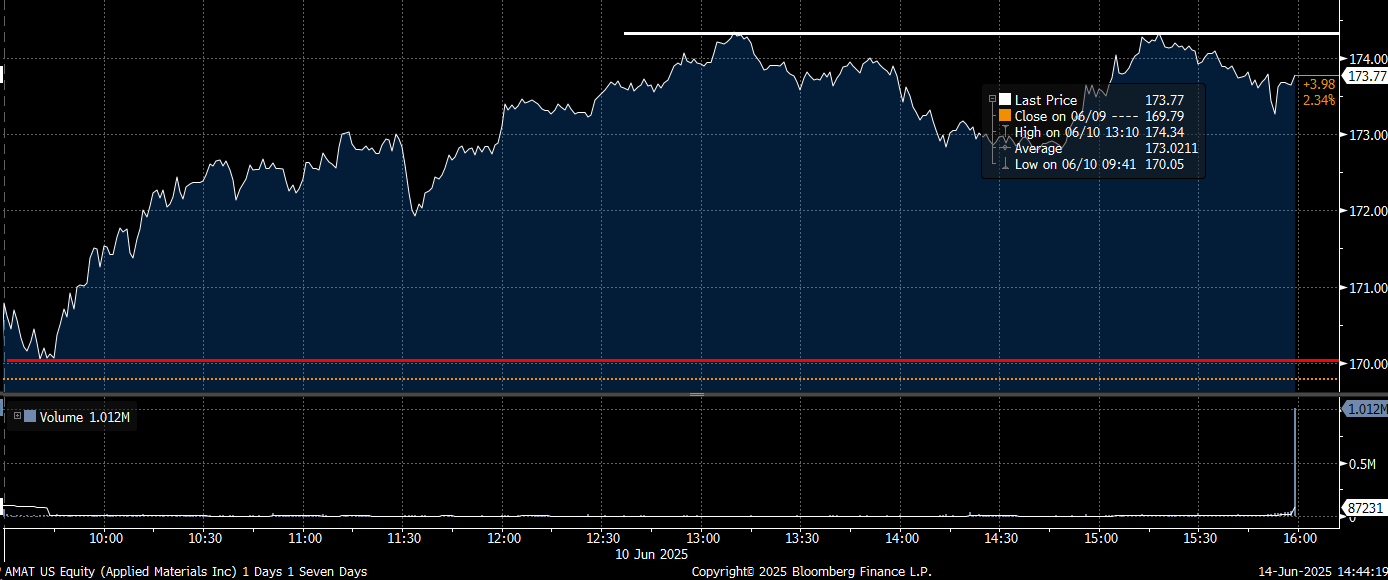Tap In: The Day Trading Starter Kit
Learn how to map key price levels, manage risk, and lock in gains.
This is intended for educational purposes only, this is not a recommendation. You should consult your financial advisor before engaging in any action.
As we continue our investment strategy series, today we’re diving into day trading. There are tons of strategies out there — some of them wildly complex — but today I want to share one that’s easy to follow. The beauty of this approach is that once you get the hang of it you can start layering on more advanced techniques to better anticipate stock moves.
Alright, enough talk, let’s get to it.
Step 1: Look at how the stock typically trades
Before jumping into a trade, check out how the stock has moved over the past few days. I usually look at the last 3–5 trading days to get a feel for the stock’s behavior.
What you’re looking for is volatility, you want a stock that moves. If a stock barely moves, there’s not much opportunity to profit.
Step 2: Mark key levels
Next, take note of the high and low prices from the previous trading days. These give you clues about where to enter and exit your trade.
Let’s walk through a real example using Applied Materials (Ticker: AMAT).
June 10, 2025:
The high was $174 (white line)
The low was $170 (red line)
June 11, 2025:
The high was $175 (white line)
The low was also $170 (red line)
So what does this tell us? The stock found support at $170, that’s the level where buyers step in to stop the price from falling lower. Meanwhile, it tried to break past $175, but couldn’t quite push through, that’s your resistance level. These support and resistance zones give us a roadmap for potential profit and risk. And now that we’ve got that mapped out, we’re ready to trade.
Step 3: Set up your trade
We will set-up our trade for June 12th. The market opens that morning with AMAT trading at $173, that’s below our $175 resistance level, so we’re in a decent spot to trade.
Let’s say you buy 20 shares at $173.
To protect yourself, you set a stop-limit sell order, this helps limit your downside if the trade doesn’t go your way.
Stop price: $172
Limit price: $171.50
This tells your broker:
“If the stock drops below $172, sell it, but don’t sell lower than $171.50.”
This setup helps limit your losses to around 1.7%, assuming the $170 support holds. In this scenario, I feel confident it will. But if I thought the stock might drop below that level, I could’ve just gone with a regular stop-loss at $170. That way, the stock would only sell if it hit $170.
Step 4: Lock in your gains
Since $175 is our resistance level, that’s where we’ll aim to take profits.
We place a sell limit order at the top:
Limit price: $175
With this setup, the stock will only sell if the price hits $175 or higher.
If the trade goes perfectly and your shares sell at $175. That’s a $2 profit per share — or $40 total on the day. Not bad for a couple of minutes of work.
Remember, we only make trades when the odds are stacked in our favor. Think of it like this: how much am I willing to lose in exchange for the chance to make $40. If the potential loss is more than $40, the trade probably isn’t worth it.
In our example, with the stop-limit setup, you’re risking around $30 for a shot at making $40. These numbers aren’t exact, but based on how the stock has been moving lately, I feel good about the setup.
Time is of the essence
This kind of strategy is time-sensitive. The market opens at 9:30 AM, and in our AMAT example, the stock hit its high around 10:40 AM. By 11:20 AM, it had already dropped back down to $173.
If you hesitated or missed your entry window, you probably missed the profit opportunity altogether. In day trading, being prepared before the market opens is everything. Most trading volume happens between 9:30 AM and 10:30 AM, and again during the last hour of the day, from 3:00 PM to 4:00 PM. So if you’re serious about catching those quick market moves, block out those times on your calendar and lock in.
Aight! I’ve armed you with the basics. This week, follow a few stocks and try out this strategy. No need to risk real money yet, paper trade and get a feel for how the market moves.
Finally, I’m excited to announce a trading workshop coming this summer. I’ll be dropping details in the next few weeks.
Until then, stay curious, stay disciplined — and as always, happy investing!






